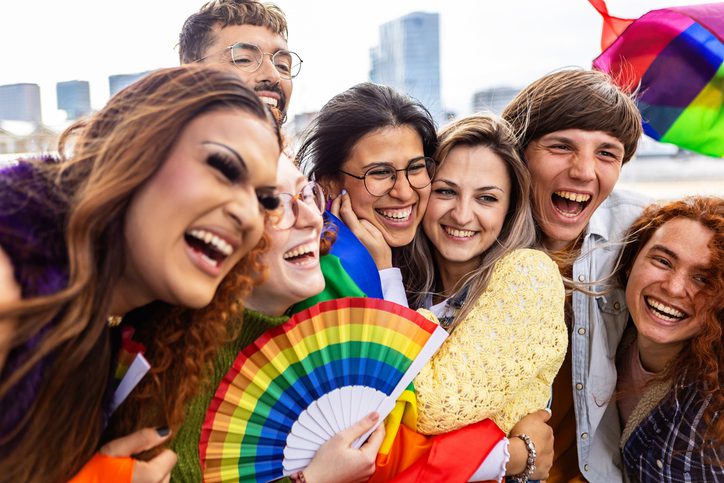Every year, November 13-19 is set aside for Transgender Awareness Week, a time to raise awareness about transgender people and the issues they face in society. The week culminates in Transgender Day of Remembrance (TDOR) on November 20, which honors trans people who have lost their lives to violence. The unique struggles trans people face place them at higher risk for mental health concerns. At The Pavilion in Williamsburg, Virginia, we believe everyone deserves to have the best possible mental health, regardless of their gender identity.
Statistics About Transgender People
There is a lot of misinformation about trans people, which can lead to stigma and barriers to care. Having accurate information can make it easier for non-transgender people to feel comfortable around those who are trans and safer for trans people to live authentic lives.
- Around 1.6 percent of all American adults and 5 percent of American adults under the age of 30 identify as trans.
- There are over 2 million people living in the United States who consider themselves to be trans or nonbinary.
- Around 18 percent of people who identify as trans or nonbinary are under the age of 18.
- Approximately 44 percent of Americans say that they know someone who is transgender. About half of all adults under 50 report that they know someone who is trans.
A Glossary of Trans-Related Terms
Many people are unfamiliar with the terminology associated with gender identity, which can lead to confusion and misunderstandings:
- Gender identity – how someone defines their own gender. For a cisgender person, this is the same as the gender they were assigned at birth. For a transgender, nonbinary, or intersex person, this may be different.
- Transgender – Someone who was assigned a gender at birth, usually based upon their visible genitals, that does not match how they define themselves.
- AFAB – “Assigned female at birth,” a term that is sometimes used to describe transgender men or nonbinary people who society would largely describe as female.
- AMAB – “Assigned male at birth,” a term that is sometimes used to describe transgender women or nonbinary people who society would typically define as male.
- Nonbinary – A nonbinary person may consider themselves as falling under the umbrella of transgender, but they may see themselves as neither male nor female or as some combination of the two.
- Gender fluid – A person who does not experience their gender in the same way from one day to the next.
- Intersex – The term “hermaphrodite” was used in the past to describe people born with ambiguous genitalia or genitalia that is both male and female, but intersex is now the preferred term.
- Gender expression – A person’s appearance may or may not “match” the gender they were assigned at birth or their internal perception of their gender. Their decision to wear dresses, make-up, long hair and/or a beard, speak in a higher or lower voice, or use body language that is typically expected of a man or a woman is how they express their gender. Cisgender people also sometimes engage in gender expression that doesn’t match their gender identification (e.g., a cisgender woman who wears a suit and tie).
- Gender transition – Though many people think hormone replacement therapy or surgical procedures are referenced with this term, it can refer to a number of different changes that people make when they begin to live according to their gender identity. A person’s age may determine what their transition can include. Some adults also choose to transition in only one or two of these ways, while others might do all of the things listed:
- Wear different hair or clothing styles
- Go by a different name than the one they were given at birth
- Change vital records, such as their legal name, birth certificate, driver’s license, and social security card
- Take puberty blockers to delay sexual development
- Alter the body’s appearance with hormones like estrogen or testosterone
- Have top or bottom surgery to make their body align more closely with their gender identity
- Gender-affirming care – this is medical or mental health care that actively accepts and supports a person’s gender identity. At a minimum, this involves using a person’s preferred name and pronouns and ensuring staff are trained to be culturally competent when dealing with trans and nonbinary individuals. It can also entail medications or surgical procedures that assist a person in their transition.
Threats to Trans Mental Health
Transgender people are at increased risk of mental illness, not because they are trans, but because they are more likely to experience adversity. Some examples include:
- Shockingly high rates of sexual assault – trans people have a 50 percent chance of being victims of sexual assault at some point in their lives.
- Hate crimes – one study found that 50 percent of all people who died as a result of hate crimes were LGBTQ+. Seventeen percent of all reported violent hate crimes against LGBTQ+ people are targeted at trans people, especially trans women.
- Negative perceptions of trans people, increased by anti-trans laws, school policies, and public rhetoric, have been linked to increased suicide attempts among young trans and nonbinary people.
- Institutionalized trans phobia prevents trans and nonbinary people from receiving the same level of care as cisgender people.
- Misgendering – when someone uses a pronoun that does not align with the gender identity of the person they are addressing, whether accidentally or intentionally, it sends the message that the person’s identity is not valid. Consistent misgendering has been linked to post-traumatic stress disorder (PTSD) in trans and nonbinary people.
- Lack of support – we all need people we can turn to in times of need and in times of celebration. Trans people are more likely to face rejection, discrimination, and harassment than cisgender people, simply because they are trans. This has been linked to a high level of emotional distress.
- Barriers to updating vital records – Some states have enacted policies that make it harder for a person to update their vital records to match their gender identity. Not having identification that matches a person’s gender presentation can expose them to harassment, make it harder for them to obtain services, and lead to them being assaulted.
At The Pavilion, we provide trauma-informed care to adults and seniors struggling with mental health and substance use concerns. We offer detox, inpatient, and outpatient treatment that is evidence-based and tailored to meet the unique needs of each patient we serve.





